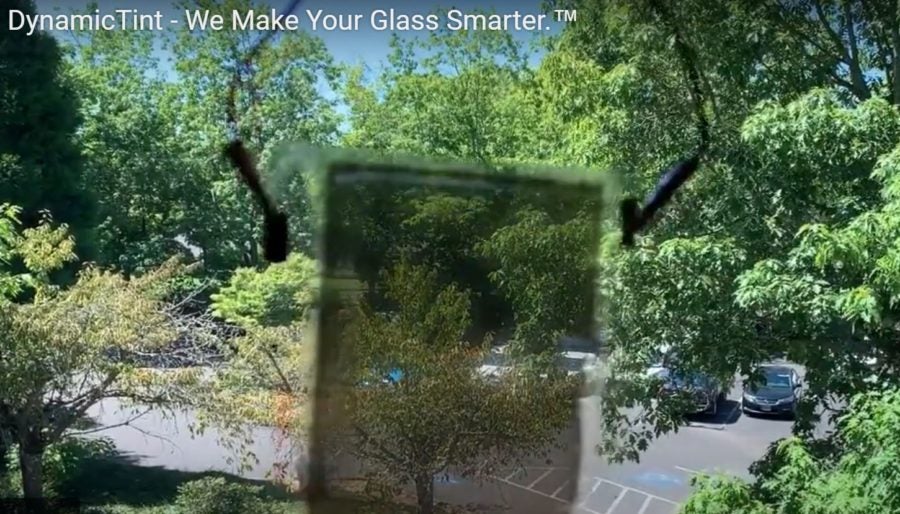Smart Windows have a lot of promise. Eventually, these windows may be able to both block out light, increase privacy, and showcase scenes from other locations, giving you fantastic views from any place in the world regardless of where you are.
Initially, they worked as virtual blinds, but initial efforts only worked in new installations, not retrofit, and were just too expensive for both the glass and the wiring needed for the windows to be cost-effective. They didn’t darken, only went from transparent to opaque. People wanted to see out of their windows, so this early technology wasn’t ideal for a building solution even if cost weren’t a significant issue.
Well, Crown Electrokinetics has come up with a retrofit design that should be not only relatively inexpensive, but have a unique secondary benefit of sound elimination and the possibility of localized privacy screens.
Let’s talk about Smart Windows this week.
Smart Window Development
Smart Windows have been used creatively in places like bathrooms and conference rooms for some time. They tend to be opaque when they are supplied with power and clear when unpowered. They typically work using liquid crystal technology, like what is used in TVs, with two modes. There is development going on for Smart Glass windows that can be turned into TV screens and potentially show views from any place in the world, but I expect that the technology’s cost will be restrictive for at least a decade. This last type would potentially improve the value of homes and hotels placed where the views are anything but great.
Right now, we are primarily working with binary Smart Windows. While we’ve been installing them for well over a decade, they are still more of an expensive curiosity than an affordable alternative to drapes.
There are two traditional approaches to Smart Glass. One is to build the technology into a glass window, and the other uses a film. The first is far more durable but wicked expensive, and the second is potentially far cheaper but has proven to have installation and durability problems like any window film. Both require that you wire the window to AC, adding substantially to the cost of installation.
Crown Electrokinetics Has a Better Idea
Crown Electrokinetics‘s technology is film-based, but they apply it to another glass panel placed inside the existing window and is solar-powered. When power is applied, the window is clear, and when there is no power, the window is dark.
Sadly that is precisely the opposite of what you’d want when darkening windows as you’d want them dark during the day and clear at night, so the module has a rechargeable battery that adds slightly to the cost. But this approach also makes wireless switching at night or day viable (otherwise, you’d have no power at night). The film works off of DC power, is placed on the inside of the extra glass panel, and adds one more layer of insulation once applied. This extra layer of insulation should substantially lower both the heat and sound that comes from the window.

In addition, this is a retrofit technology, meaning you can apply it to an existing structure without replacing the windows or rewiring the exterior of the building, providing a far quicker return-on-investment than the older glass or film-based solutions. This path may also be best for when we move to Smart Windows that can display full images. However, I expect they will need an external power source and some advanced capability to put the images where they will be most realistic, which doesn’t exist at scale yet but could be adapted from existing Video Wall technology.
Window into the Future
This week, Electrokinetics won their first large-scale deal for a 70K square-foot Houston office building that will take this beyond a concept into a viable solution when done. The technology promises to reduce energy and expand privacy during the summer, and replace automated drapes with a far more solid-state solution. This solution should last indefinitely (I expect the batteries may need to be replaced every decade, but battery technology is also improving).
Limitations on the technology are that it won’t work with operable windows since it forms a separate layer inside the existing window and darkens significantly. Sadly it doesn’t go fully opaque yet but, I expect, that capability is coming.
This solution isn’t just a fascinating IoT offering with the windows wirelessly connected to centralized building management controllers or room-based controls. It eventually promises a possible path to replace even the operable windows in your home with a solid-state alternative to blinds and drapes. The result would be homes and offices that are more energy-efficient, quieter, and potentially more private than what we have today.
Also read:


